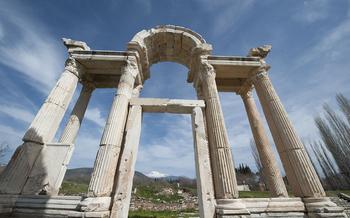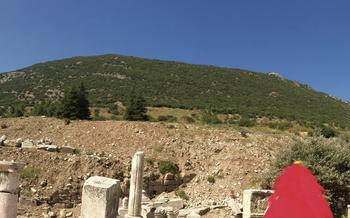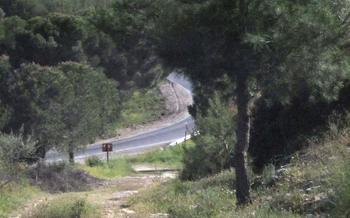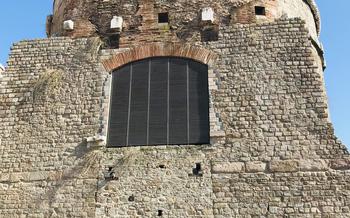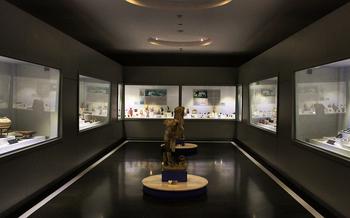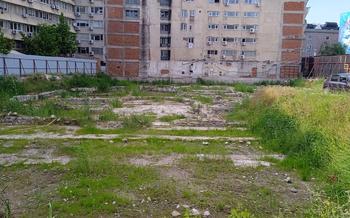
Cave of the Seven Sleepers
- The Cave of the Seven Sleepers: A Historical and Religious Site
- Location and Accessibility
- Exploring the Cave
- The Seven Sleepers Legend
- Visiting Hours and Admission Fees
- Nearby Attractions and Activities
- Best Time to Visit
- Accommodations and Dining Options
- Dress Code and Safety Precautions
- Local Customs and Etiquette
- Sustainable Tourism Practices
- Historical Context of the Cave
- Cultural Significance of the Cave
- Insider Tip: Secret Chamber Discovery
The Cave of the Seven Sleepers: A Historical and Religious Site
The Cave of the Seven Sleepers, located in the ancient city of Ephesus near Selçuk, Turkey, holds a profound historical and religious significance. According to Christian and Islamic traditions, the cave was the refuge of seven young men who fled persecution and miraculously slept for centuries. The legend, rooted in both the Bible and the Quran, has captivated the imaginations of pilgrims and visitors for generations, making the cave a revered site in the region.
In addition to its religious significance, the cave holds historical importance as an archaeological site. Excavations have uncovered artifacts and inscriptions that shed light on the cave's use as a sanctuary and dwelling place during the Byzantine and Seljuk periods. These discoveries, along with the cave's well-preserved condition, make it a valuable resource for studying the region's rich history and cultural heritage.
Location and Accessibility
The Cave of the Seven Sleepers is situated in the picturesque town of Selçuk, nestled in the heart of Aydın Province, Turkey. Reaching this historical and religious site is a breeze, with multiple transportation options available. From the vibrant city of İzmir, you can embark on a scenic 45-minute drive, following the D550 highway that leads directly to Selçuk. Alternatively, hop on a convenient train from İzmir, which takes approximately 1 hour and 15 minutes, offering stunning views of the countryside.
Once in Selçuk, the cave is just a short distance away, easily accessible by foot or by taking a local taxi. Its proximity to the town center makes it a popular destination for both pilgrims and tourists alike. The cave's exact coordinates for easy navigation are 37°56'52"N 27°21'45"E.
Exploring the Cave
The Cave of the Seven Sleepers is a vast and intricate underground labyrinth, revealing a hidden world of natural wonders. As you venture into the cave, you'll be greeted by a series of chambers and tunnels, each with its own unique features and formations. Marvel at the towering stalactites and stalagmites that adorn the cave walls, creating an awe-inspiring spectacle of nature's artistry. Keep an eye out for hidden crevices and narrow passages that may lead to secret chambers or secluded corners.
For a truly immersive experience, opt for a guided tour led by knowledgeable local experts who can provide insights into the cave's history, geology, and legends. They'll point out notable features, such as the "Sleeping Chamber," where the Seven Sleepers are said to have rested for centuries, and the "Hall of Mirrors," where the cave's reflective walls create a mesmerizing illusion.
If you prefer to explore at your own pace, self-guided tours are also available. Equip yourself with a flashlight and sturdy footwear to navigate the cave's uneven terrain safely. Remember to be mindful of your surroundings and respect the sanctity of the site by leaving no trace of your visit.
The Seven Sleepers Legend
The Cave of the Seven Sleepers is steeped in legends and myths, the most prominent of which is the story of the Seven Sleepers. This tale, with various versions across different cultures, narrates the extraordinary journey of seven Christian youths seeking refuge from religious persecution in the 3rd century AD.
According to legend, the seven young men, along with their dog, sought shelter in a cave near Ephesus, seeking God's protection. Miraculously, they fell into a deep slumber that lasted for centuries. During this time, the world outside underwent significant transformations, including the rise of Christianity.
Upon awakening, the Seven Sleepers emerged from their slumber to discover a world vastly different from the one they had left behind. They marveled at the changes, and their tale quickly spread throughout the region, inspiring awe and wonder.
The legend of the Seven Sleepers has deep religious and cultural significance. It symbolizes the power of faith, divine intervention, and the enduring nature of truth. It has been referenced in various religious texts and has influenced art, literature, and folklore throughout history.
Locating the exact cave where the Seven Sleepers are said to have slept has been a subject of debate and exploration. Over the centuries, several caves have been identified as potential sites, including the Cave of the Seven Sleepers near Ephesus.
The legend of the Seven Sleepers continues to captivate imaginations and serves as a reminder of the enduring power of faith and the extraordinary nature of divine intervention.
Visiting Hours and Admission Fees
The Cave of the Seven Sleepers is open to visitors seven days a week, except for major holidays and special events. Visiting hours may vary depending on the season, but generally, the cave is open from 9 AM to 5 PM. It is advisable to check the official website or contact local authorities for the most up-to-date information.
Admission fees are charged for both local and international visitors. The fees may vary, but typically, local visitors pay a reduced rate compared to international visitors. Discounts or concessions may be available for students, seniors, and groups. It is recommended to inquire about these discounts when purchasing tickets.
Advance booking is not required, and tickets can be purchased on-site at the cave's entrance. However, during peak tourist season or for large groups, it is advisable to make reservations in advance to avoid long queues and ensure a smooth visit.
Nearby Attractions and Activities
In addition to the Cave of the Seven Sleepers, the Aydın region offers a plethora of other attractions and activities to complement your visit. History buffs can delve into the ancient city of Ephesus, a UNESCO World Heritage Site, or explore the ruins of Aphrodisias, once a prominent center of Greek culture. Nature lovers will find solace in the serene beauty of Lake Bafa Nature Park, a haven for diverse birdlife, or embark on a scenic hike in the Dilek Peninsula National Park. For a taste of local culture, visit the vibrant city of Kuşadası, known for its lively bazaars, charming cafes, and stunning coastline. Whether you seek historical wonders, natural landscapes, or cultural experiences, the Aydın region has something to offer every traveler.
Best Time to Visit
The best time to visit the Cave of the Seven Sleepers is during the shoulder seasons, from April to June and from September to October. During these months, the weather is generally mild and pleasant, with warm days and cool nights. The cave can be quite crowded during the summer months, so it is best to avoid visiting then if you prefer a more peaceful and intimate experience.
It is important to note that the cave is located at a high altitude, so it can be cold and windy, especially during the winter months. If you visit during the winter, be sure to dress warmly and bring appropriate footwear.
Accommodations and Dining Options
When planning your visit to the Cave of the Seven Sleepers, you'll find a range of accommodation options nearby to suit your preferences and budget. From cozy guesthouses to modern hotels, there are places to stay that offer comfortable lodgings and easy access to the cave. For those seeking a more immersive experience, camping facilities are also available in the area, allowing you to camp under the stars and wake up to the tranquil surroundings of the cave.
Food enthusiasts will delight in the local cuisine offered by restaurants and cafes in the vicinity of the cave. Savor traditional Turkish dishes prepared with fresh, local ingredients, and indulge in the flavors that have made Turkish cuisine renowned worldwide. Whether you prefer a sit-down meal at a restaurant or a quick bite at a cafe, you'll find plenty of options to satisfy your cravings.
For those who prefer self-sufficiency, designated picnic areas or spots are available for outdoor dining. Pack a delicious spread of snacks and drinks, find a scenic spot, and enjoy a leisurely picnic surrounded by nature's beauty. It's a great way to savor the flavors of your own culinary creations while immersing yourself in the tranquility of the surroundings.
Dress Code and Safety Precautions
Exploring the Cave of the Seven Sleepers requires appropriate attire and footwear. Comfortable, non-slip shoes or hiking boots are essential for navigating the uneven terrain inside the cave. Loose, lightweight clothing is recommended to allow for freedom of movement and to protect against the cool temperatures within the cave.
Safety is a top priority when exploring the cave. Visitors should adhere to the safety guidelines provided by the local authorities or tour guides. Carrying a flashlight or headlamp is crucial for illuminating the dark corners of the cave and ensuring safe navigation. Additionally, bringing a bottle of water and a basic first-aid kit is advisable for any unforeseen circumstances.
Respecting the restricted or dangerous areas of the cave is crucial. These areas may be closed off for safety reasons or to protect sensitive archaeological sites. Visitors should obey the signs and instructions provided by the cave authorities and avoid venturing into these restricted areas.
Local Customs and Etiquette
When visiting the Cave of the Seven Sleepers, it is important to be mindful of local customs and traditions to ensure a respectful and enjoyable experience. Here are some guidelines to follow:
-
Dress conservatively: Dress modestly and avoid revealing clothing, particularly if you plan to visit during religious holidays or events.
-
Be respectful of local guides and caretakers: Greet them politely and show appreciation for their knowledge and guidance. Ask permission before taking photographs or videos of them.
-
Maintain a respectful attitude: Remember that the cave holds religious significance for many people. Avoid loud noises, disrespectful language, or behavior that may be offensive to others.
-
Avoid offensive behavior: Be mindful of your actions and words, and avoid any behavior that may be considered culturally insensitive or disrespectful.
By following these guidelines, you can demonstrate your respect for the local culture and contribute to a positive and meaningful experience for all visitors.
Sustainable Tourism Practices
As responsible travelers, it is crucial to adopt sustainable practices that minimize our impact on the environment and support local communities. When exploring the Cave of the Seven Sleepers, consider the following tips to promote sustainability:
-
Reduce waste: Avoid single-use plastics and opt for reusable water bottles and containers. Properly dispose of waste in designated bins to prevent littering.
-
Support local businesses: Choose local guides, restaurants, and accommodations that actively contribute to the local economy. Purchase souvenirs and handicrafts from local artisans to support their livelihoods.
-
Respect the natural and cultural heritage: Refrain from damaging or disturbing the cave's formations, wildlife, or historical artifacts. Respect the sanctity of the site by avoiding loud noises, graffiti, or inappropriate behavior.
-
Advocate for responsible tourism practices: Share your experiences and encourage fellow travelers to adopt sustainable habits. Advocate for responsible tourism initiatives that protect the cave's natural and cultural heritage for future generations.
Historical Context of the Cave
The Cave of the Seven Sleepers is deeply entwined with the history of Aydın and the surrounding region. Archaeological evidence suggests that the cave and its environs have been inhabited since ancient times. Excavations have unearthed artifacts from various periods, including the Neolithic, Bronze Age, and Classical Greek era. These discoveries indicate that the cave served as a refuge, a place of worship, and a potential trade route in antiquity.
In the 6th century AD, the cave gained prominence as a Christian pilgrimage site associated with the legend of the Seven Sleepers. The legend tells the tale of seven Christian youths who sought refuge in the cave to escape persecution and miraculously slept for centuries before awakening in a changed world. This legend resonated with early Christian communities and contributed to the cave's religious significance.
Throughout history, the cave has witnessed the rise and fall of empires, including the Byzantine, Seljuk, and Ottoman empires. Each era left its mark on the cave, with architectural modifications, inscriptions, and cultural influences. These historical layers add to the cave's rich tapestry and make it a valuable site for understanding the region's past.
Cultural Significance of the Cave
The Cave of the Seven Sleepers holds immense cultural significance, deeply intertwined with local folklore and storytelling. Over the centuries, the cave has become a muse for artists, writers, and musicians, inspiring literary works, artistic depictions, and musical compositions that capture its mystical aura and historical significance. The cave's rich history and legends have left an indelible mark on the local identity, shaping the sense of place and community. Visiting the Cave of the Seven Sleepers offers a unique opportunity to immerse oneself in the cultural heritage of the region, appreciate the artistic expressions inspired by the cave, and gain a deeper understanding of the local traditions and beliefs.
Insider Tip: Secret Chamber Discovery
Legends whisper of a hidden chamber within the Cave of the Seven Sleepers, a secret sanctuary veiled from the eyes of ordinary visitors. Local tales speak of a hidden passage leading to this chamber, where ancient treasures and forgotten knowledge lie concealed.
For the adventurous spelunker, the allure of this hidden chamber is irresistible. While its existence remains unverified, the possibility of uncovering its secrets is a thrilling prospect. To increase your chances of finding the chamber, explore every nook and cranny of the cave, paying attention to unusual rock formations or hidden crevices.
Remember, the cave is a sacred site, and any exploration should be conducted with respect and caution. Avoid any unauthorized or dangerous actions that may damage the cave or disturb its delicate ecosystem. The true reward lies not just in discovering the hidden chamber but in the journey itself, where the mysteries of the past intertwine with the thrill of exploration.
